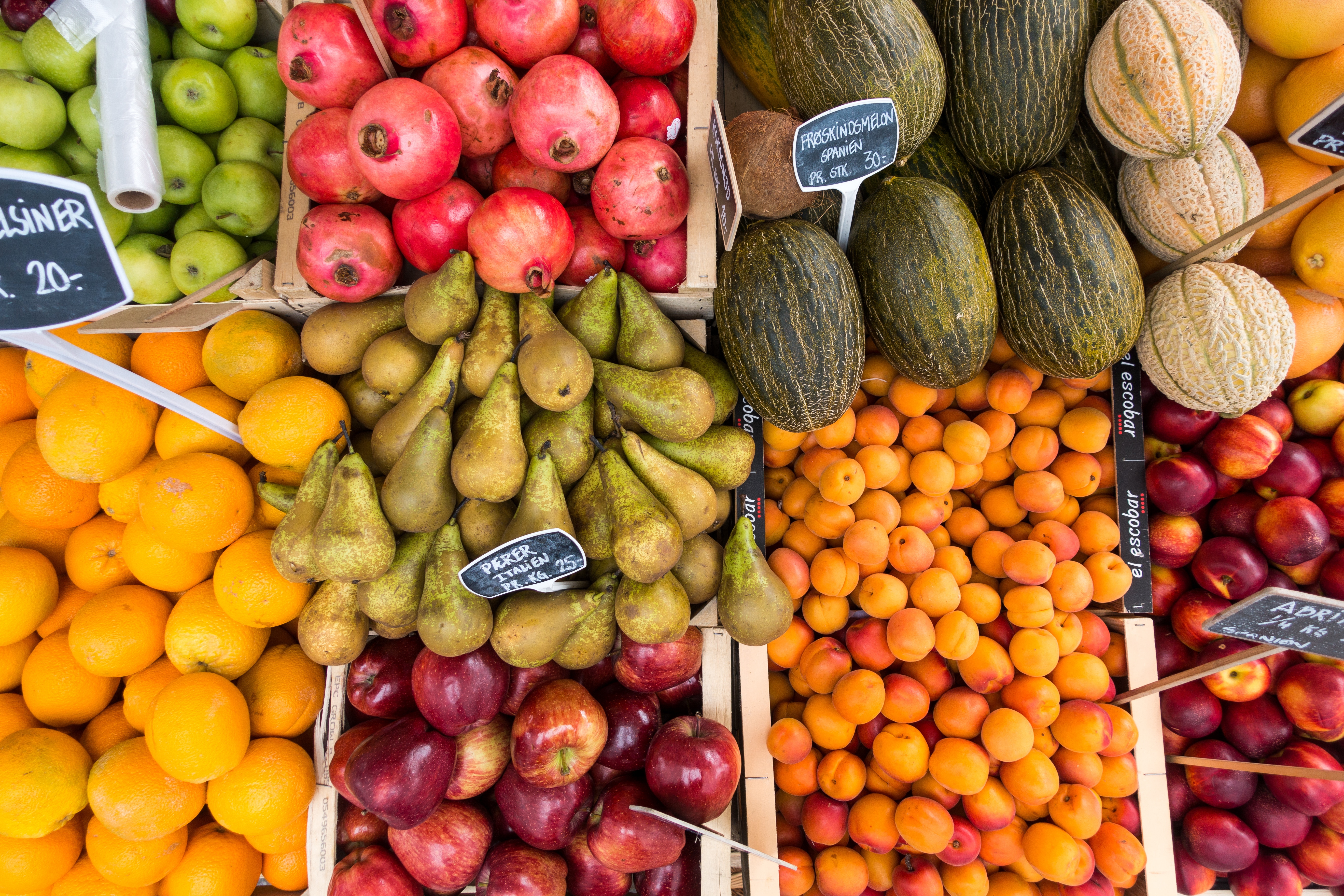Healthy Grocery Shopping – that’s how it works!
Going to your supermarket nearby in order to buy your daily groceries sounds easier than it is. Without a shopping list, it is difficult to find your way in the food jungle, especially when it comes to healthy food choices. What appears to be healthy at first glance is certainly not always the best choice. Colourful food packaging, advertising promises, discount offers and oversupply of food make things actually pretty complicated. The result of these obstacles is a fully-packed shopping trolley – but in fact not with what we really wanted, or with goods that help us to maintain a healthy and balanced diet.
But, healthy eating starts in the supermarket. So make sure you buy high-quality and healthy food, in order to be prepared also for stressful times. Conscious and well-planned grocery shopping helps you to have healthy food supplies at home and saves time, too. You can also prepare healthy meals with a full pantry or have access to good snacks when you need them quickly.
Test your knowledge and Uncover nutritional myths
Recognising the food lies
Tricks in product illustration and advertising promises
Fresh and juicy fruit on the packaging whets the appetite and entices people to buy the product. This does not mean, however, that the pictured fruits or other high-quality ingredients are actually contained. A strawberry yogurt, for example, does not always consist of strawberries, but sometimes the fruit content is apple pieces coloured with the juice of beetroot. The fruit yogurts are then given their flavour by artificial flavouring agents from the chemical laboratory.

Product names also often promise more than the product actually delivers or deceive the consumer. This is why a fitness muesli often still contains huge amounts of sugar or a grain bread does not contain whole grain. Even so-called “clean labels” for food without artificial additives such as flavour enhancers, aromas, colourings etc. are only “without” at first glance. Manufacturers like to use yeast extract, seasoning or soy sauce as flavour enhancers, as these do not have to be declared as such according to food law.
TIP:
Read the ingredient list if you want to know what food products actually contain This is also where you can see whether sugar has been added to the food. The ingredients are listed in descending order by weight.
Label swindle on organic products

Organic food contains more health-promoting plant secondary metabolits and organic animal products from grazing livestock have a healthier composition of fats compared to conventional food. In addition, organic products contain fewer additives, a lower pesticide load and are subject to stricter guidelines. But organic is not just organic, because there are many different standards. German supermarkets are constantly expanding their range of organic products and are bringing organic private labels into circulation.
Such products only meet the EU’s ecological criteria. The EU-organic label requires that 95% of the ingredients must come from organic farming. Other foods carry organic labels from associations such as Demeter, Bioland or Naturland. The association labels at least meet the EU requirements – but usually they have higher standards and much stricter criteria. For example, food with such labels must come from 100% organic farming and may not contain any genetically modified material.
TIP:
You want organic food that meets a minimum standard? Then look out for the official Bio-EU label when shopping. Buy food with association labels if you want stricter guidelines to be implemented, e.g. on additives, genetic modification and animal welfare.
Hidden sugar
The food industry uses around 70 different names for added sugar: apple syrup, dextrose, sucrose, lactose, fructose, fruit sweetener, fruit juice concentrates, lactose, whey product, sweet whey powder, whole milk powder, skimmed milk powder, dextrose, barley malt extract, glucose-fructose syrup, glucose syrup, glucose, etc. For this reason, attention should be paid to the ingredient list in the case of foods bearing advertising slogans such as “only with natural fruit sweetener” or “low sugar” and all highly processed foods. This includes supposed “fitness” foods, breakfast cereals and fruit drinks, which often contain a high proportion of sugar.

Important: Foods that naturally contain sugar (e.g. fruit, natural yoghurt, quark, sugar-free dairy products and cereal products) do not contain added sugar and therefore support a sugar-conscious diet. Sugar-free shopping therefore means replacing foods with added sugar with foods that naturally contain sugar.
TIP:
You can see from the ingredient list whether sugar has been added to the food. Look for anything with -ose, -syrup, sweet or sugar in its name and for additives ending in -powder, -concentrate and -dextrin. Avoid highly processed foods and always use the whole grain variety of e.g. pasta, bread and rice. The CHALLENGE will support you in this.
Advertising with the origin ("from the region", "from here")

Many manufacturers advertise with products from the region or from the country. But these terms are not protected by law and can be freely interpreted. Suppliers usually define the terms more broadly than consumers would do. The products usually do not really come from a nearby region. The regional label on products is voluntary and provides information on the region of origin, the place of processing, the proportion of regional ingredients used and the supervisory authority and is therefore a good guide. However, the products can be marketed throughout Germany, so a food product originating in Bavaria can also be sold as “regional” in Hamburg.
TIP:
Always question carefully! Take a close look at the regional label or ask in the shop. Also pay attention to the proportion of ingredients that come “from the region” and what the region is defined as.
Advice on sustainable food purchasing
Regional and seasonal
There are various reasons for shopping seasonally and regionally: the reduced environmental impact of shorter transport distances, the fact that food is fresher and therefore full of nutrients and the support of the local economy. In addition, seasonal, domestic fruit and vegetables usually contain fewer residues of plant protection products than imported goods.
TIPP:
Use a SEASONAL CALENDAR to plan your food shopping and meals and go to weekly markets or use farm shops and smaller organic supermarkets. Use suppliers such as the “Öko-Kiste”, who supply regional, seasonal and mostly organically grown products. Don’t be fooled by misleading advertising in everyday life.
Avoiding waste of food
“Best before…” on a food indicates the point in time until which an unopened food retains its specific properties such as taste, smell and nutritional content when properly stored. Even after the expiry date, these foods are often still edible and do not need to be disposed of directly. “To be consumed by…” is written on packaged, highly perishable food that is susceptible to germ contamination. It indicates the last day on which the food can still be consumed. Examples are minced meat, fresh meat products, smoked fish, fish products, delicatessen salads and pre-cut salads.
TIP:
See what you have at home and write a grocery shopping list accordingly. This way you always have a basic stock of long-lasting food at home and can buy fresh and perishable food as needed. A meal plan can help you with this, which you can create for the whole week or always for the coming days.
The problem with plastics
If you shop in a supermarket, there is no way around packaging: around 90 per cent of food is only available in packaging, or only plastic bags are available for packing vegetables. The advantages of plastic compared to alternative and natural materials are obvious. It is lighter, stronger, more durable and, above all, much cheaper to produce. But the disadvantages are as obvious as they are many and varied. And packaging does not only contribute to the waste problem: Time and again, harmful substances get into the food through them. In most cases, we only absorb very small quantities of undesirable substances that enter the food through the packaging, which are generally harmless to health. Nevertheless, some of the things we pick up on the food shelf should not go unnoticed.
TIP:
Use a rucksack and cloth bags instead of plastic bags when shopping. Use reusable fabric fruit/vegetable nets and reusable glass packaging instead of plastic. Take a water bottle with you when you’re out and about, which you can fill with tap water over and over again. Thermo cups for your Coffee-To-Go and leak-proof containers for lunch on the go also save a lot of disposable packaging.
Smart grocery shopping
Relaxed shopping
Not only what, but also in what condition we go grocery shopping influences our choice of food. We have two decision-making areas, which means that we make decisions in different ways. Among other things, our mental attention determines whether a (un)healthy choice of food is made. In other words, the higher the level of attention, the healthier the nutritional decisions. This means that when we are tired, unhealthy food tends to end up in the shopping trolley. Under stress, and this includes when we are hungry, we tend to make automatic decisions that are effortless, fast and uncontrolled. So when you go shopping hungry, tired or stressed, impulse shopping is the result.
TIP:
You should not go shopping when you are tired, hungry or stressed out. So always have a snack with you, which you can eat after work for example, and write a shopping list. This makes it much easier for you to make sure that the right thing ends up in your shopping trolley.
Reading food correctly
Labels, colourful pictures, per portion information and advertising texts do not always make it immediately apparent whether a particular food is “healthier”. That is why you should only look for two pieces of information when it comes to food – the nutrient table based on 100g and the ingredient list. The nutrient table helps you to compare different foods, e.g. in terms of sugar or calories per 100g. You will be surprised how much protein is in a standard quark compared to “protein products”. From the ingredient list you can see what exactly the food contains the most, because the ingredients are listed according to the amounts of “much to little”.
TIP:
The less the better applies to the list of ingredients. Because the fewer ingredients, the more natural the food is. If you want to know which of two equivalent foods contains less sugar or fat, you should take a look at the “per 100g” information.



